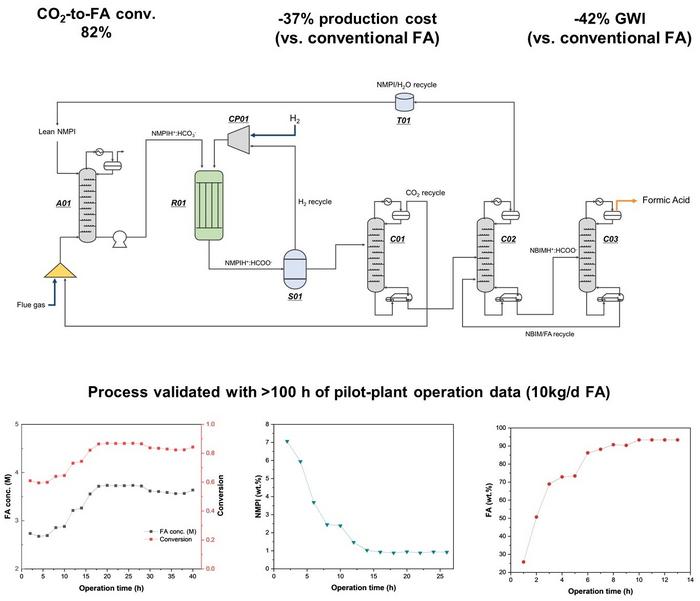Breath Acetone Insights from Time-Restricted Eating Trial
In a groundbreaking exploration into the metabolic intricacies of intermittent fasting, researchers have unveiled novel insights into how ketone bodies fluctuate in response to time-restricted eating (TRE) on a calorie-restricted diet. While prolonged fasting has long been associated with dramatic weight loss and a characteristic rise in ketone bodies over several weeks, this new study […]


In a groundbreaking exploration into the metabolic intricacies of intermittent fasting, researchers have unveiled novel insights into how ketone bodies fluctuate in response to time-restricted eating (TRE) on a calorie-restricted diet. While prolonged fasting has long been associated with dramatic weight loss and a characteristic rise in ketone bodies over several weeks, this new study challenges and expands our understanding by examining how ketone dynamics evolve under more practical, everyday fasting regimens. Importantly, this investigation marks the first time the temporal pattern of ketone bodies—measured through breath acetone—has been closely tracked during a structured TRE protocol, shedding light on the underlying biochemical adaptations during the dieting process.
The study analyzed 60 participants who embarked on an eight-week calorie-restricted diet, randomly assigned to two distinct timing windows for eating: a 14-hour fasting period with a 10-hour eating window (14:10), and a balanced 12-hour fasting and 12-hour eating window (12:12). Prior clinical observations had already noted that individuals adhering to the extended 14-hour fast lost more weight compared to their 12-hour counterparts, illustrating the potency of even slight modifications in eating schedules. Yet, until now, what remained nebulous was how these altered eating durations influenced ketone body production and utilization — critical markers of metabolic health and fat oxidation.
Ketone bodies, primarily acetone, acetoacetate, and beta-hydroxybutyrate, are metabolites generated during periods of low carbohydrate availability, signaling a metabolic shift from glucose reliance toward fat-derived energy substrates. Breath acetone, in particular, serves as a non-invasive proxy for quantifying systemic ketone levels, offering a window into the internal state of fuel metabolism. Historically, fasting studies have documented a marked ketone increment for up to three weeks, plateauing thereafter as production balances with utilization. The current investigation sought to verify if this classical ketone response profile holds true under TRE conditions.
.adsslot_JlOcURxgC1{width:728px !important;height:90px !important;}
@media(max-width:1199px){ .adsslot_JlOcURxgC1{width:468px !important;height:60px !important;}
}
@media(max-width:767px){ .adsslot_JlOcURxgC1{width:320px !important;height:50px !important;}
}
ADVERTISEMENT
Researchers systematically collected weekly breath acetone measurements across all participants. The data intriguingly showed that during the initial three weeks, breath acetone concentrations increased similarly in both the 14:10 and 12:12 groups, corroborating the traditional understanding of a ketone rise during early fasting. This initial increment reflects the body’s metabolic pivot toward fat breakdown, a hallmark adaptive response to periods of caloric deficit. However, after this period, the study recorded a divergence in ketone patterns that had not been previously described in TRE literature.
Between weeks four and eight, the group fasting for 14 hours daily exhibited a notable reduction in breath acetone levels compared to the 12-hour fasting group. Statistically significant, this difference—a mean of 5.45 parts per million lower in the 14:10 group—suggests a metabolic adaptation beyond simple fat catabolism. The authors posit that this decrease indicates enhanced ketone utilization, implying that after an early phase of increased ketogenesis, the body optimizes its efficiency in using ketones as fuel under extended fasting regimens. Put differently, the initial burst of ketone production transitions into a phase where production and consumption attain a dynamic equilibrium, reflecting improved metabolic flexibility.
The implications of this finding resonate beyond academic interest, offering potential axes for clinical application and metabolic health optimization. One of the persistent questions in obesity and diabetes research is how dietary regimens rewire energy metabolism over time and whether such shifts confer lasting benefits. TRE has surged in popularity not only for weight management but also for improvements in insulin sensitivity, lipid profiles, and circadian alignment of metabolic pathways. The current study enriches this narrative by providing mechanistic evidence that ketone body metabolism adapts intricately during TRE, an essential consideration for designing personalized nutrition strategies.
Moreover, the results subtly challenge some widespread assumptions about fasting and ketone dynamics. The classical dogma suggests that prolonged fasting stimulates continuous ketone elevation, yet this study demonstrates a nuanced biphasic trend where ketones rise and then fall as metabolic efficiency improves. This opposition to linear models of ketone increase adds important granularity to nutritional biochemistry and calls for a reevaluation of how fasting durations translate into metabolic shifts. It also underscores the need to appreciate that ketone levels alone may not fully capture energetic states without considering utilization rates.
Another dimension of this investigation brings to light the value of breath acetone as a practical biomarker. Unlike blood ketone monitoring, which can be invasive and impractical for regular use, breath acetone measurement offers a compelling alternative, facilitating wider adoption of metabolic monitoring in both research settings and everyday life. The ability to noninvasively track a person’s ketone status over extended dietary interventions could catalyze advancements in personalized dietary adherence feedback, real-time metabolic health assessment, and potentially even early detection of metabolic dysfunction.
Notably, while weight loss was confirmed to be greater in the 14:10 fasting group, the ketone body data revealed no significant between-group differences during the early weeks. This lack of early divergence hints that initial weight loss benefits from extended fasting may not be driven solely by differences in ketone production but could involve additional metabolic or behavioral mechanisms such as caloric intake regulation, hormonal modulation, or appetite control. It invites future studies to explore how TRE intersects with other physiological processes to elicit favorable body composition outcomes.
Contextually, this work also addresses the growing interest in cyclical fasting and dietary time windows within the sphere of metabolic health and chronic disease prevention. Although starvation as a treatment for obesity is obsolete due to its deleterious effects, intermittent fasting, particularly TRE, mimics elements of starvation physiology in a controlled, safe manner. By revealing ketone kinetics during such protocols, the study provides a foundation for refining fasting recommendations and tailoring them to individual metabolic responses, potentially maximizing the therapeutic impact of nutritional interventions.
The methodological rigor in the randomized controlled design strengthens the validity of conclusions drawn. Randomizing subjects minimized confounding variables, while weekly repeated measures permitted a granular temporal analysis rarely seen in observational diet studies. This robustness lends confidence to the observed metabolic trends and distinguishes the work as an important step forward in understanding human fasting biology.
Looking ahead, several intriguing avenues arise from these findings. It remains to be determined how different caloric restrictions, macronutrient ratios, or physical activity levels modulate the observed ketone trajectories under TRE protocols. Similarly, whether populations with metabolic impairments such as type 2 diabetes or metabolic syndrome respond analogously or differently remains unexplored. Integrating ketone body dynamics with other biomarkers like insulin, glucose, free fatty acids, and muscle metabolism markers could unveil comprehensive biochemical portraits of fasting adaptation.
In synthesis, this study moves the needle in metabolic research by elucidating the biphasic ketone body response to time-restricted eating combined with calorie restriction. The novel discovery that ketone levels, as gauged by breath acetone, peak and then decline during extended TRE implies a sophisticated metabolic recalibration driving enhanced ketone utilization and fat oxidation. This nuance refines our conceptual frameworks about fasting physiology and opens doors for precision nutrition paradigms harnessing temporal eating patterns for health optimization.
As intermittent fasting continues to captivate scientists and the public alike, studies like this shine a spotlight on the metabolic choreography underlying its benefits. The revelation that ketone bodies decrease after an adaptive phase of TRE underscores the metabolic plasticity inherent in human physiology. Empowering people to harness their own fuel switching mechanisms through evidence-backed dietary timing could revolutionize how we approach weight management, metabolic health, and chronic disease prevention in the coming years.
Subject of Research: Metabolic adaptations and ketone body kinetics during time-restricted eating on calorie-restricted diets.
Article Title: Randomized controlled trial of time-restricted eating: secondary analyses of breath acetone.
Article References:
Rebello, C.J., Zhang, D., Anderson, J.C. et al. Randomized controlled trial of time-restricted eating: secondary analyses of breath acetone. Int J Obes (2025). https://doi.org/10.1038/s41366-025-01818-1
Image Credits: AI Generated
DOI: https://doi.org/10.1038/s41366-025-01818-1
Tags: biochemical adaptations dietbreath acetone measurementcalorie-restricted diet effectsfasting and ketones relationshiphealth insights from fastingintermittent fasting researchketone body dynamicsmetabolic adaptations fastingparticipants in fasting studystructured eating protocolstime-restricted eating benefitsweight loss strategies
What's Your Reaction?

































